The LG G3 Review
by Joshua Ho & Anand Lal Shimpi on July 4, 2014 5:00 AM EST- Posted in
- Smartphones
- LG
- Mobile
- Laptops
- G3
CPU Performance
By now, the Snapdragon 801 is mostly well-understood. It has four Krait 400 cores at either 2.26 or 2.45 GHz, an Adreno 330 at 578 MHz, a faster ISP, DSDA support, and higher clocks on the memory interface, along with support for eMMC 5.0 for faster NAND speed. However, OEM design choices can have significant effects on the relative performance of a device. For example, the Galaxy S5 trailed behind the HTC One (M8) despite a faster SoC due to worse thermal dissipation. This was because water resistance necessitated a new design that effectively encased the SoC in a polycarbonate cage, trapping heat in. The LG G3 has the same SoC and same build materials as the Galaxy S5, but the midframe is magnesium, not polycarbonate. This means that peak performance can be higher than the Galaxy S5.
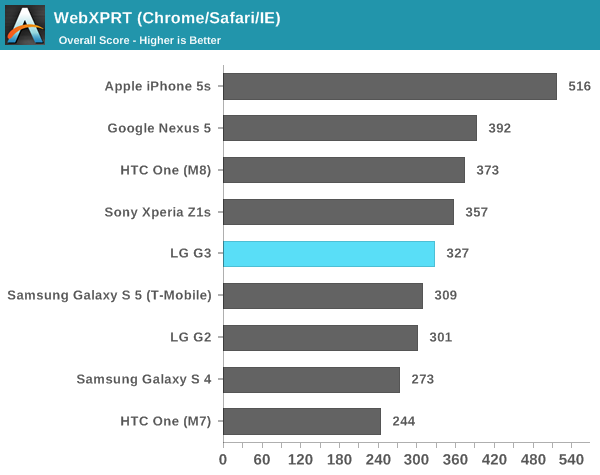
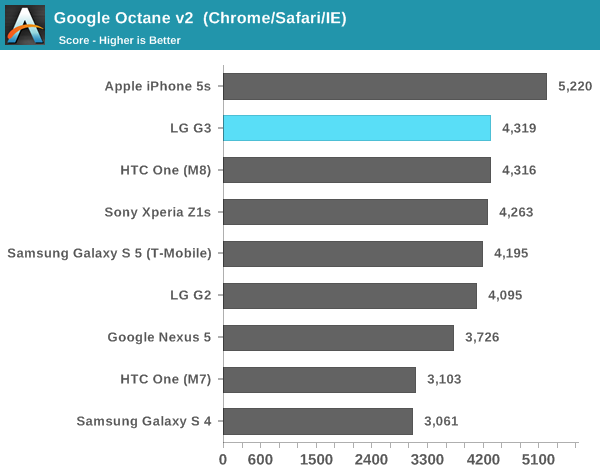
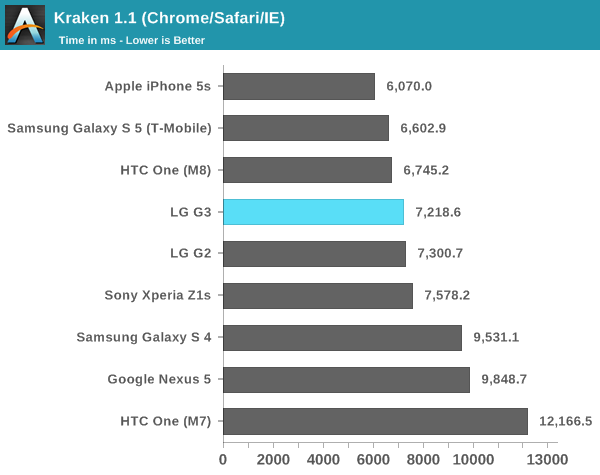
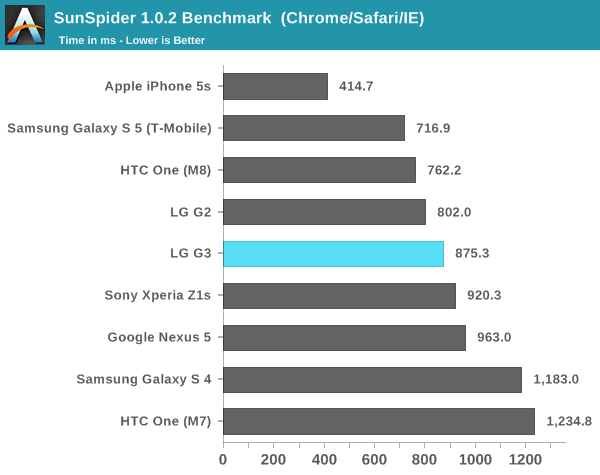
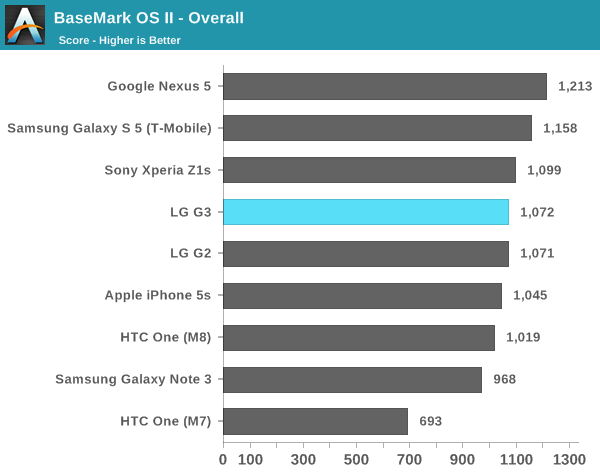
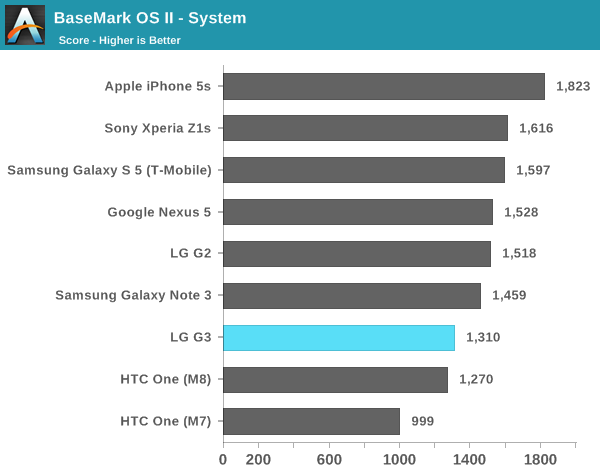
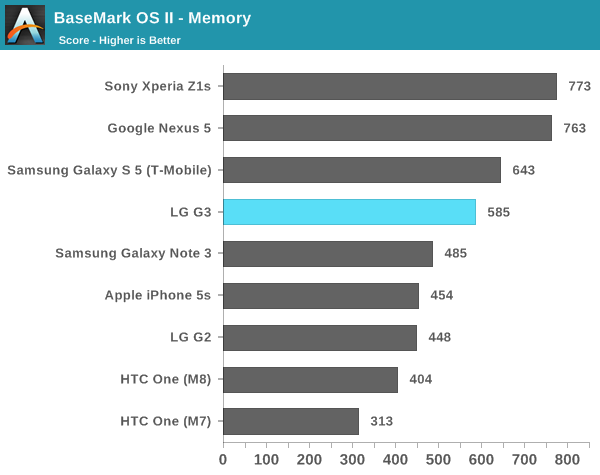

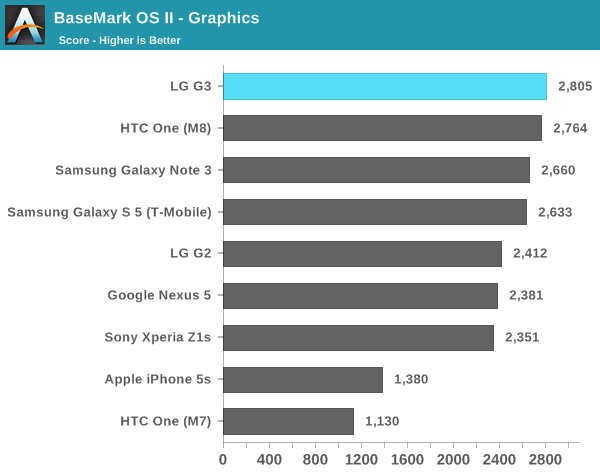
Relatively speaking, there's not much in the way of interesting things to talk about here, despite the new configuration. The G3 seems to trail the other S801 devices in web performance but it seems to depend upon the benchmark. This seems to be partially because of the G3's willingness to throttle, or because of the display's heat output. Either way, the trend is clear because of how often the display brightness is capped to 90 or 95 percent of the maximum to cool off the phone. When this isn't an issue though, the short benchmarks tend to show the faster performance of the G3.
GPU Performance
While the state of CPU benchmarking is heavily subject to difference in the performance of the web browser, things are a bit better in the GPU side. All Snapdragon 801 SoCs have the same GPU clocks, so this means that it'll be much easier to examine throttling behavior and reduce variability due to confounding factors.
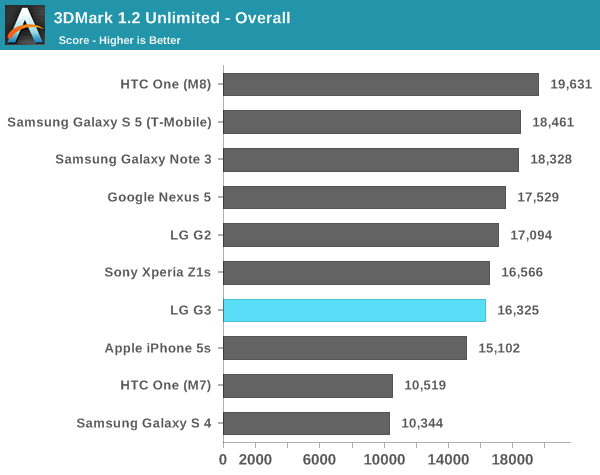
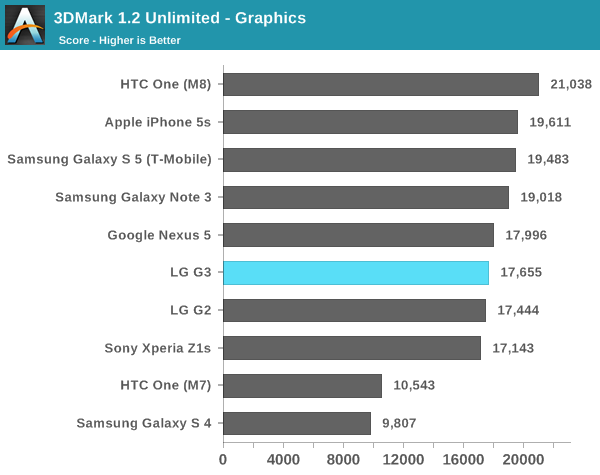

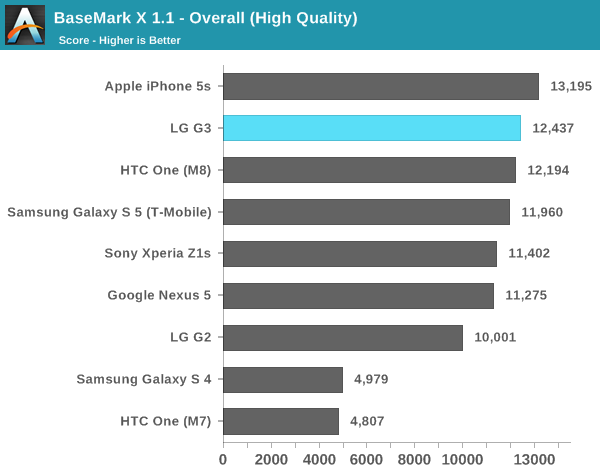
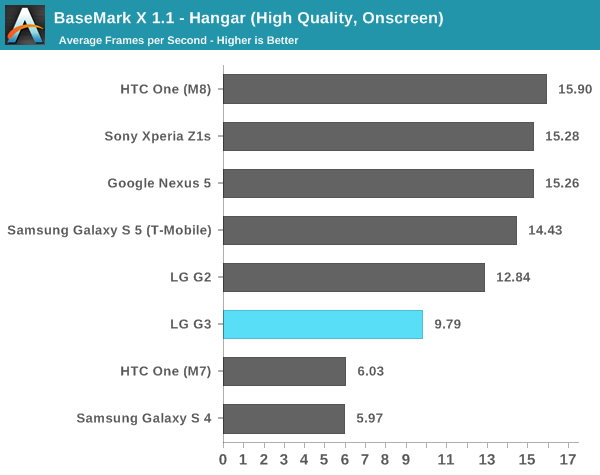
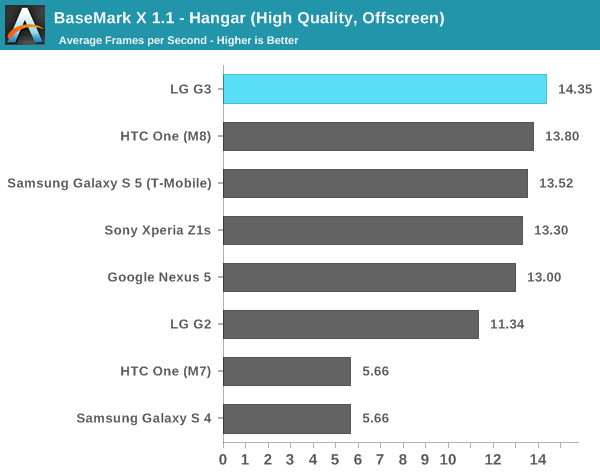
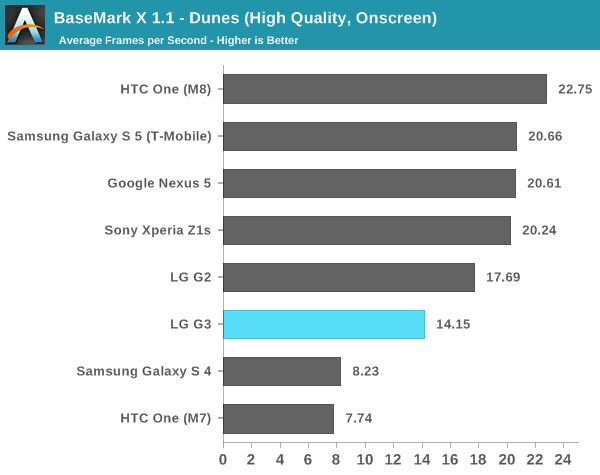
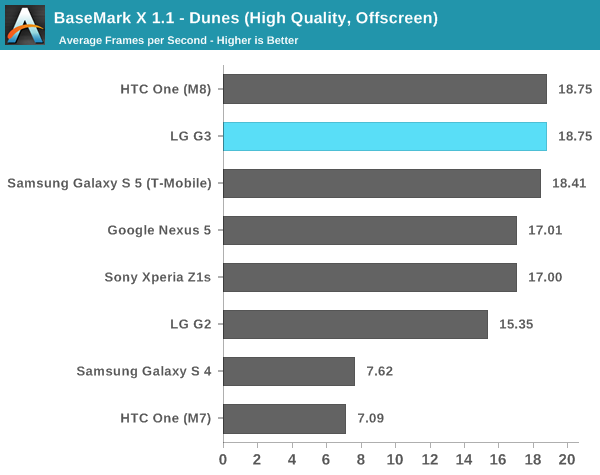
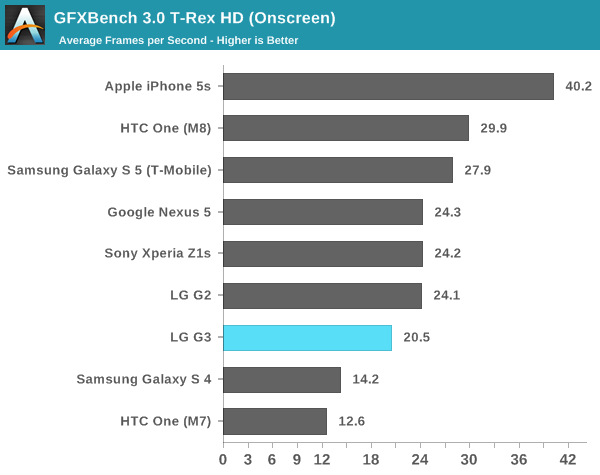
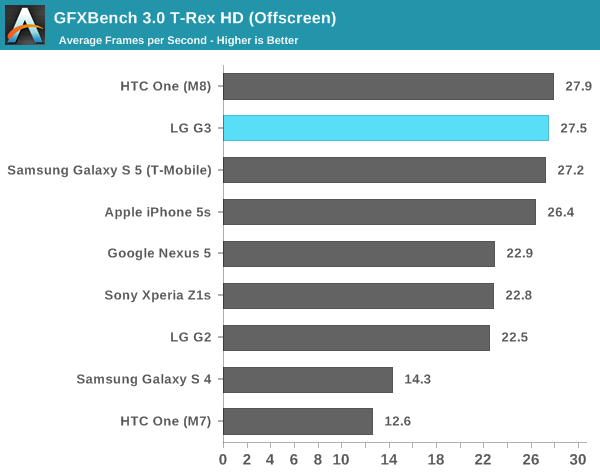
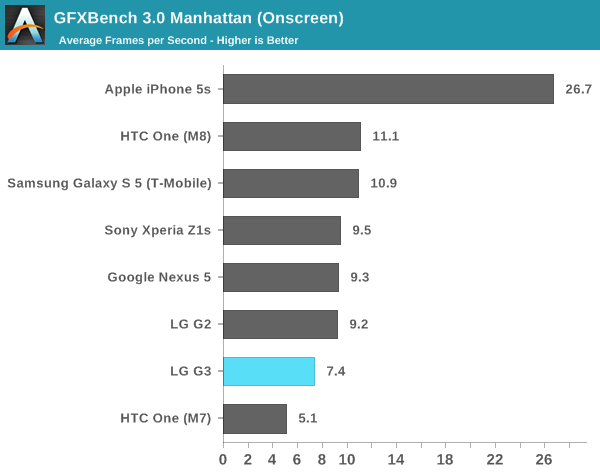
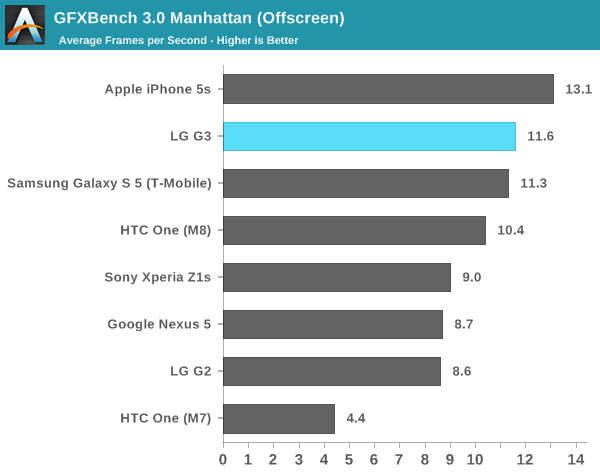
Here, we can see a noticeable trend. In the short tests, the LG G3 does great, easily nearing the top of the scores. However, 3DMark's extremely long-running test means that the G3 noticeably suffers in performance compared to the competition, and this is worsened by the G3's sinusoidal throttling patterns that cause significant degradation of performance for periods of time to balance out the high performance periods. On the on-screen tests, the G3 does worse than the high-end competition, which suggests that QHD/1440p truly does need Snapdragon 805's Adreno 420 in order to keep real-world performance from regressing relative to the Snapdragon 801, 1080p-screened counterparts.
NAND Performance
NAND performance used to be an afterthought, and effectively never discussed in most reviews. However, after the original Nexus 7 revealed the headaches that come with poor I/O performance this metric has increasingly come under greater scrutiny. To quantify this performance, we turn to Androbench with custom settings to evaluate Android smartphones.
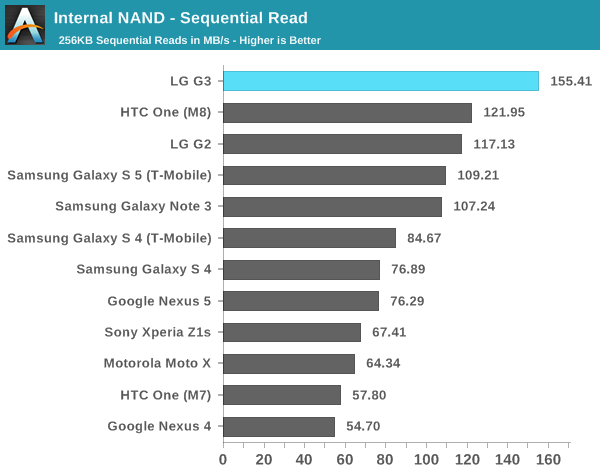
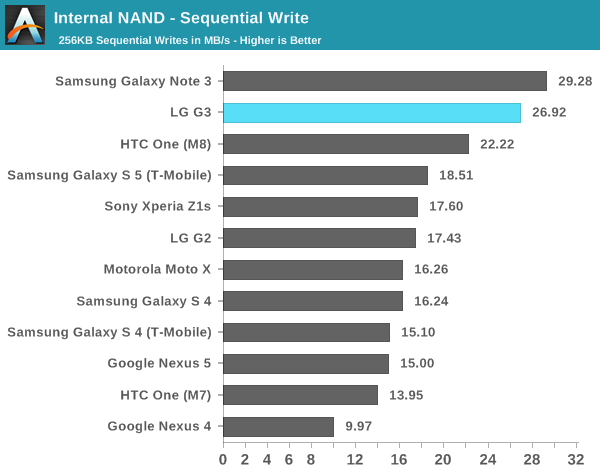
Here, the G3 is off to a great start. The sequential read speeds set new records and sequential write speeds are almost as good as it gets. This means that LG isn't cheaping out on NAND, which means that shooting 4K video and similarly intensive situations won't be a problem on the G3. However, random I/O performance is much more important as that's where people will notice poor performance in the form of stuttering and pauses.

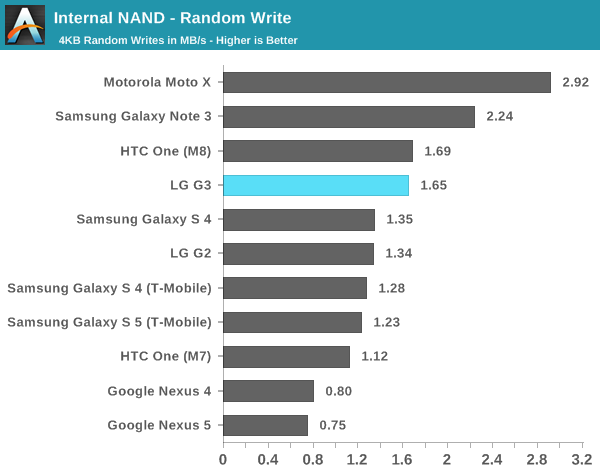
Here, we see a similar pattern. The LG G3 does great in random reads, but random write isn't quite as great. It's still perfectly usable and shouldn't present any problems for smoothness or general performance. The Moto X continues to hold its considerable lead here due to its F2FS file system that allows for much faster random I/O performance. Overall, the LG G3 shouldn't have any issues with I/O pauses, although you should still keep around 25% of your storage open to keep up I/O performance.










174 Comments
View All Comments
ZeDestructor - Friday, July 4, 2014 - link
I can't see individual pixels on my 24" 1920x1200 screen (~97ppi), but I can EASILY tell the difference between 1920x1080 on a 5.0" phone compared to 1280x720 on a 4.7" phone at 30cm view distance.Hell, when the iPhone 4 came out with 326ppi, I could see the grid at around 15cm view distance, probably more - some of us have better eyes than others.
Not seeing the pixel grid doesn't mean it's past ocular limits.
SleepyFE - Friday, July 4, 2014 - link
If it looks like a perfect circle it can't look any more like a perfect circle. Can it?ZeDestructor - Saturday, July 5, 2014 - link
The eyes is very good at spotting aliasing. It doesn't jump out at you, but you get the inherent feeling that it's just not right, and with someone like me, that breaks down to peering closer, and closer, and closer, then suddenly microscope D:jeffkibuule - Friday, July 4, 2014 - link
We must stop this silliness that "not seeing pixels" is the only goal of a display when there are several other metrics at play. You'd still be able to tell the difference between aliased and non-aliased fonts at 12 inches because our brain does a lot of "massaging" of the raw data our eyes capture before we interpret it in our visual cortex. Or more simply put, "the eye is not the be-all end-all of human vision".SleepyFE - Friday, July 4, 2014 - link
I didn't say not to alias fonts. That has nothing to do with resolution, PPI or PPD. The point is that when you can't tell the difference anymore, you can't tell the difference anymore. Aliasing and proper color reproduction and so on are different problems.mkozakewich - Saturday, July 5, 2014 - link
Just because you can't see them doesn't mean other people can't. I could see the tiny spaces *between* pixels on my desktop monitor, and hairlines were still really thick. On my 1080p 10.5" screen right now, I can still make out two parallel lines from two feet away, and can see the jaggedness of an aliased 1px line drawn diagonally. At least the white background of this page doesn't look like a big mosquito net at this density.In short, we can see a *lot* of detail, and I know it's not enough for me as certainly as you know it's enough for you.
We really shouldn't need any kind of antialiasing. Until our screens are of high enough resolution, though, they make good stopgaps.
phoenix_rizzen - Friday, July 11, 2014 - link
And PPD stands for ... ? And it compares to PPI how ... ?kaelynthedove78 - Friday, July 4, 2014 - link
"The laser appears red to my eyes, but a camera with a poor IR filter sees the laser as purple, which suggests a spread of spectrum rather than a single wavelength."kaelynthedove78 - Friday, July 4, 2014 - link
Lasers are single wavelength sources, so what are they actually using? Does the phone come with the mandatory laser safety class certificate/sticker that lists the power and wavelength?soccerballtux - Friday, July 4, 2014 - link
did you get the placemat you used for the photograph background at Target? ;)